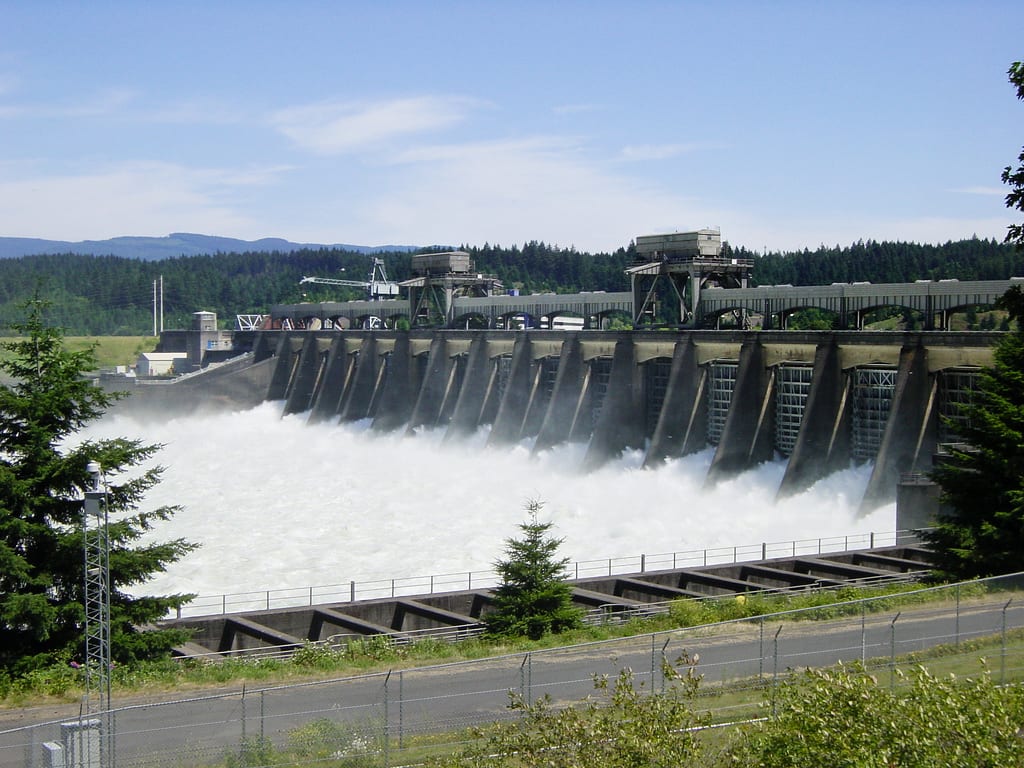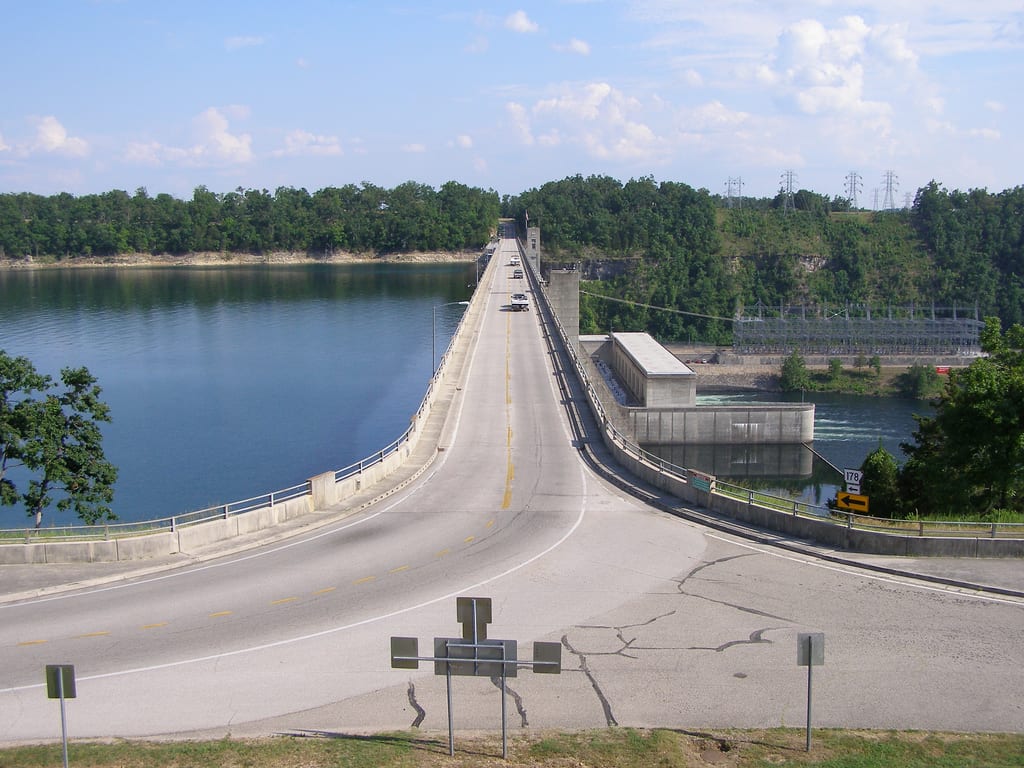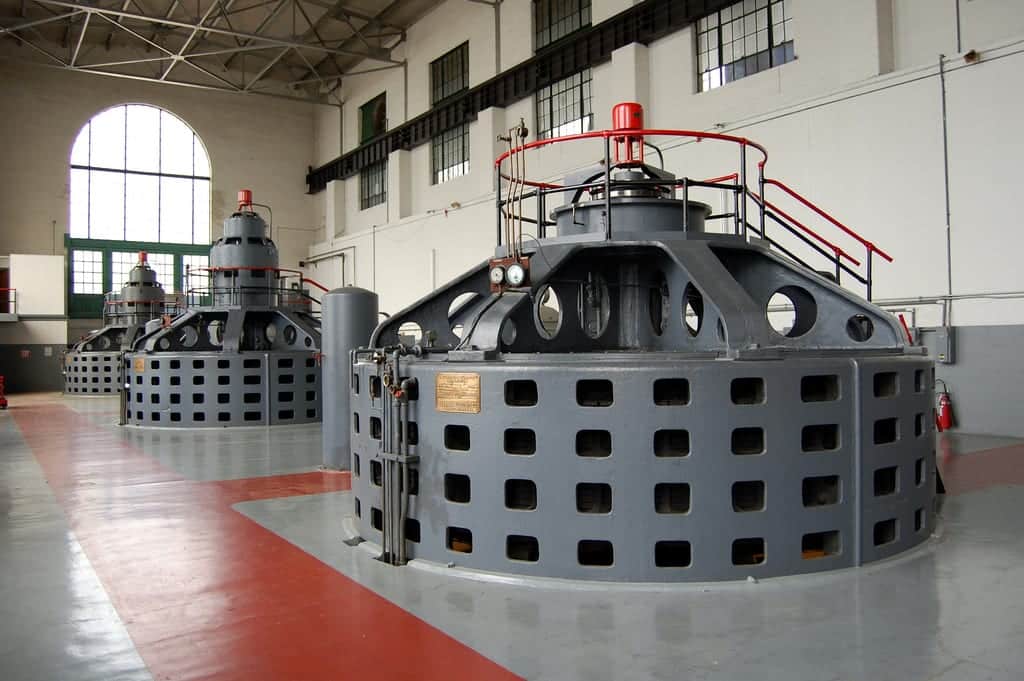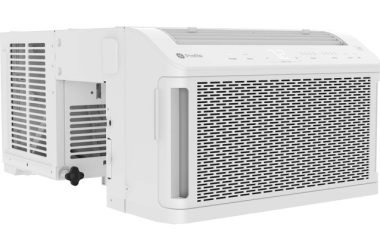Hydropower Basics
A hydroelectric (some people just call it hydro) power plant is any power plant that utilizes the movement of water to generate electricity. How this is done is dependent on the type of hydro power plant. There are many different types of hydroelectric power plants. Select the type that you are interested in from the following list.

Tablet of Contents
- Hydroelectric Dam
- Controllability, Dispatchability, and Load Balancing of Hydroelectric Power Plants
- Impact of Weather and Climate on Hydroelectric Dams
Hydroelectric Dam Basics
A hydroelectric dam is a type of hydroelectric power plant that accumulates water from rivers in a dam and lets it flow out through turbines.

As for how these hydroelectric power plants generate electricity: The motion of the water is kinetic energy and this movement pushes the turbine blades, causing them to turn.
As you can see in the image above, hydroelectric dams are sometimes incorporated into the environment in such a way that rather than obstructing activity or wasting space, it is used as a road so people can drive over it, so they won’t have to drive around it.
Hydro Power Plant Control And Load Balancing
Hydroelectric dams have a unique ability to control their power production quickly. Traditional coal and natural gas power plants (the steam type) are not very controllable due to the fact that it takes hours to change their speed and to start them. Some natural gas power plants, however, utilize combustion engines instead of a steam setup. So if electricity demand spikes, you cannot increase power production that easily.

If electricity demand spikes, you would have to start a peaking power plant. A peaking power plant is a combustion engine (either a gas turbine or piston engine, especially the former) fueled by natural gas, gasoline, diesel, or biofuels. This combustion engine turns an alternator to generate electricity. It is also possible for it to turn a dynamo, which is a direct current generator, but I won’t go into the details of that.
The alternator is a device that generates a high voltage alternating electric current (AC power). The voltage of the alternating current is then ‘stepped up’/increased up to several hundred thousand volts for transmission through the electricity grid. Power is measured in watts and is equal to voltage x current.
Peaking power plants are used for this because they start in less than 15 minutes. Hydroelectric power plants start quickly and by restricting or increasing the flow of water, you can decrease or increase the amount of power the plant is generating in seconds.
When you restrict the flow of water, you are also conserving water in the dam for later use. That would come in handy if there was a major surge in electricity demand, for example.
Think of the dam as a battery and the water as energy, you can draw less energy from it and conserve it for later use. This is why portable electronics such as phones turn their screens off to conserve the battery.
Impact Of Weather And Climate On Hydroelectric Dams
Hydroelectric dams rely on rivers as a supply of water, and they are susceptible to reduced electricity generation capacity due to a lack of water.
This lack of water can be caused by a weather problem, such as drought, or a climatic problem, or a climatic problem such as the fact that the area the power plant is located does not receive much water due to a lack of rain. Most of Africa has this problem, as well as some parts of Australia (particularly inland).
How Efficient Are Hydroelectric Power Plants?
The efficiency of hydroelectric power plants (in most cases) stands at 90%.
Wasserkraftgenerator (Sprache: Deutsch)




